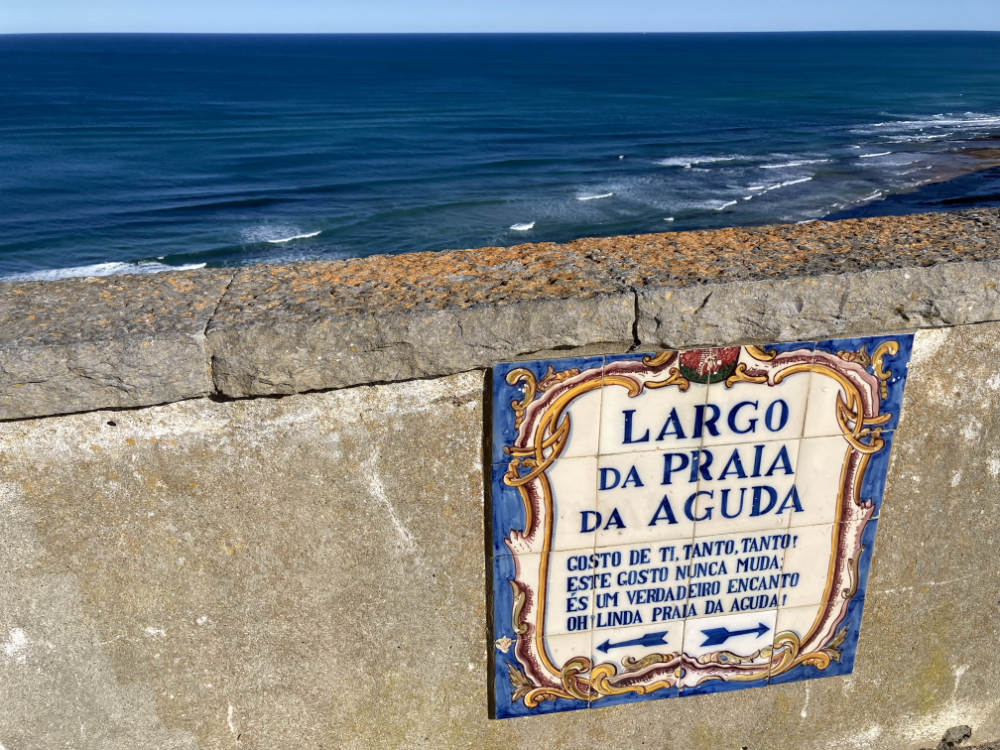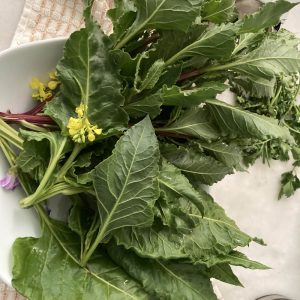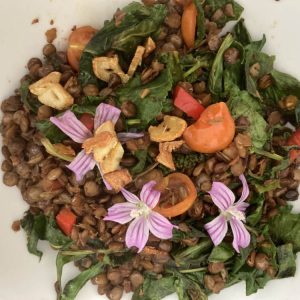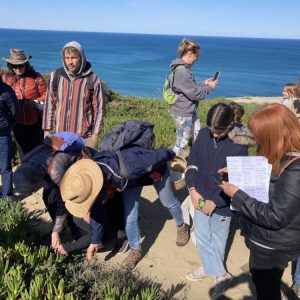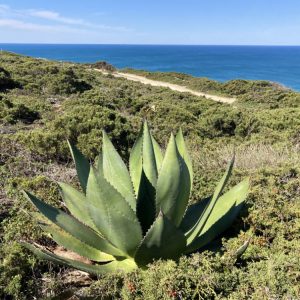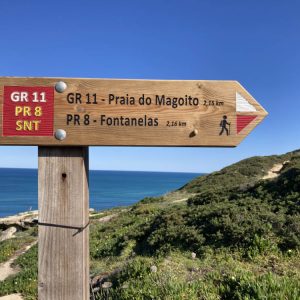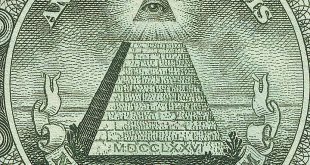Saturday 09.04.2022.
Lisbon. It‘s a bright sunny Sunday morning in early April. A tiled azulejo panel in the parking lot of the Praia da Aguda in Sintra-Cascais Natural Park describes the beauty of this beach in verse. Down below the sea is throwing magnificently regular waves; seen from the cliffs the surfers appear tiny. Not easily overlooked with her flaming ginger hair is Filomena Aivado. Today Filomena and João Santos, founders of the Lisbon-based initiative “Hortas Ecológicas” are taking us on a stroll around the world of edible wild plants. This is part of a regular programme presenting indigenous plants since 2015. As Filomena puts it, they „would like to contribute to eradicate the concept of “weed”: in nature, every plant has its value and its function.” [For me, today is my first time. I‘d heard about this event through social media; its sticky algorithm alas knows exactly what I want.]
The microclimate governing this stretch of coast is (in)famous for its cool temperatures and gusty winds. Thankfully our wander begins inside the ruins of a graffiti-covered stone house where half a dozen candidates are waiting to be identified. Sea chard for instance, also called sea beet, is an ancestor of our cultivated plant. More eye-catching is the sea samphire with its palmate waxy leaves. This plant has its place in Portuguese history: its high vitamin C content helped prevent scurvy during long ship voyages. João is handing out a tupperware box to let us try funcho do mar. Even the most tender sprouts taste intensely of fennel.
A dozen adults plus a clutch of kids are here today, including an entire hippie-surfer look family with three blonde daughters and Swedish grandmother. Another participant is gently placing plants into napkins for her herbarium. A Franco-Portuguese lady wields a stylish hand-basket, but today is more for spotting and identifying than for harvesting. For one, there are too many dogs walking this cliff path! Still: those colours… Bright yellow sorrel, pink mallow petals, so pretty in salads. Mallow leaves are a little gelatinous, and good for our digestive system. Every time I pick mallow I’m reminded of a recipe from the 1970s “Food For Free” book by British author Richard Mabey – for an Egyptian mallow stew, requiring “500g tender mallow leaves”. Hours later …
After pointing out a few toxic specimen, one of the last plants Filomena shows us is a silvery salt-tolerant shrub: Atriplex halimus, the Mediterranean saltbush, from the same family as amaranth and the quinoa grain. A welcome surprise awaits us back in the parking lot: João’s home-made paté made from that very saltbush, white beans and olive oil, on mini tostas. Plus a soothing herbal infusion of elderflower and thyme. We’ve maybe walked only a couple of kilometres today, but mind and notebook are full of inspiration. Sunshine, fresh sea air, new acquaintances: at the end a nice young man shows me on his smartphone exactly where to find New Zealand spinach above the nearby Praia da Adraga …
Hortas Ecológicas: contact for excursions, eco-work with young people, agrofitness and much more: Filomena Aivado: 968 165 997, João Santos: 966 572 941 (both on WhatsApp too), Facebook, Instagram: hortasecologicas.
 Eco123 Revista da Economia e Ecologia
Eco123 Revista da Economia e Ecologia

